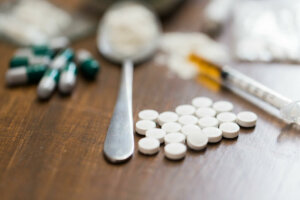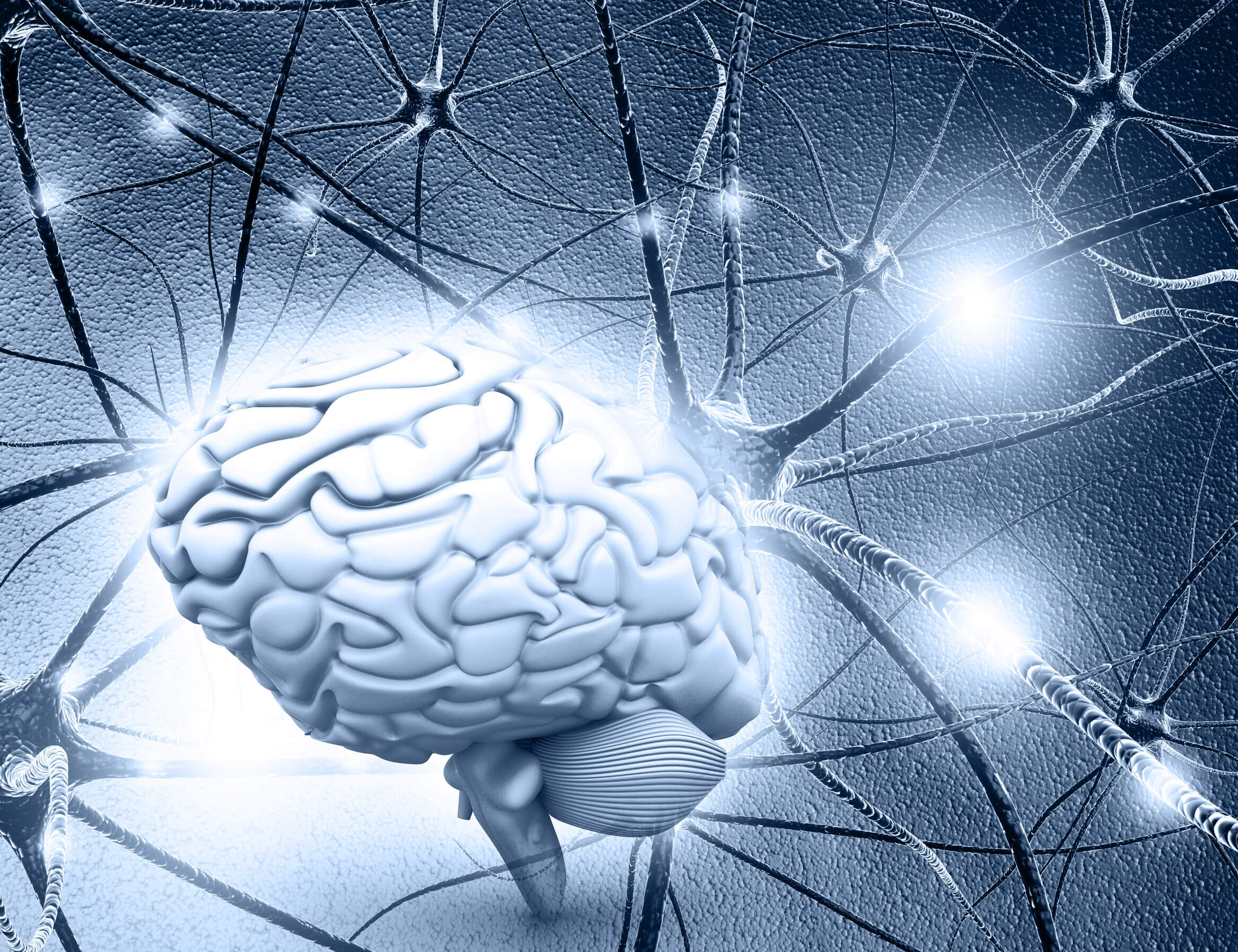The 10 Types of Drugs and Their Characteristics

A drug is defined as ‘any substance that, introduced into the living organism, can modify one or more of its functions’ (specifically, the central nervous system or CNS). Different types of drugs can cause different alterations in the user.
In DSM-5 (Diagnostic and Statistical Manual of Mental Disorders ), for example, we find drug-related disorders, such as drug use disorders and induced disorders. But how can we classify the different types of drugs? What effects do they have?
The 10 types of drugs and their characteristics
Drugs can be classified according to different parameters. One of them is according to the function they exert on the central nervous system (CNS) (Berjano and Musitu, 1987) (Freixa, 1982).
In this classification, we find 3 types of drugs: depressants (psycholeptics), stimulants (psychoanalyptics) and CNS disturbances (psycho-dysleptics). We’re going to see what action each one of them exerts and what subtypes we find.
CNS depressant drugs

Central nervous system depressant drugs are also called psycholeptics. These are substances that have the property of blocking the functions of the CNS.
Within this group, we find opiates, alcohol, tranquilizers, hypnotics and sedatives, and volatile solvents.
Opiates
Opioids include opium, morphine, codeine, heroin, and methadone. Regarding its history, the dried opium or resin is extracted from the opium poppy or Papaver somniferum. It has been used for thousands of years by Egyptians, Arabs, and Greeks for the treatment of pain and diarrhea.
It was at the beginning of the 19th century when the active principles of the plant were isolated and codeine and morphine began to be used. On the other hand, during the 19th century, a large part of morphine addicts started in military hospitals due to the use of morphine.
In 1874, heroin was synthesized, marketed as a cough drug, and later to help morphine addicts quit. Today, opioids are prescribed as pain relievers, anesthetics, antidiarrheals, and cough suppressants.
Alcohol
Alcohol is a hydrophobic lipid, so it easily crosses cell membranes, being rapidly absorbed by the stomach and distributed to all tissues. Being a simple molecule, it doesn’t have a structural complexity to interact with a specific receptor, like most psychoactive drugs.
Alcohol is a tranquilizing CNS depressant. At small doses, anxiety decreases, disinhibiting cortical activity due to depression of the function of subcortical territories. This produces a state of excitement (Adams and Victor, 1981), increasing the heart and respiratory rates.
At higher doses, the depressant action appears on the cortical neurons, producing a decrease in the level of consciousness and motor coordination.
Tranquilizers, hypnotics, and sedatives
In this group, we find barbiturates, hypnotics, carbamates (meprobamate) and benzodiazepines, used to treat problems of insomnia, anxiety, and cases of abuse and dependence on other drugs.
Volatile solvents
Volatile substances are substances with a low dependence potential, which are often used as substances of sporadic abuse.
Intoxication with this type of drug is very similar to alcoholic intoxication and intoxication by hypnotics, anxiolytics, and sedatives (for this reason the differential diagnosis in these cases is very important).
CNS stimulant drugs
In the second group of types of drugs, according to their function, we find CNS stimulant drugs, also called psychoanalyptics.
These are substances whose fundamental property is to activate or stimulate the functions of the CNS. In this group, we find amphetamines and anorectics, cocaine, xanthines (coffee, tea and cola drinks, cocoa, theobromine and theophylline), and tobacco.
Amphetamines
Amphetamines are compounds with reinforcing and stimulant effects similar to cocaine.
However, while cocaine is almost always obtained illegally, amphetamines can be legally purchased and used. These are used for the treatment of obesity, hyperactivity and narcolepsy, having no local anesthetic effects and with less potential to induce medical diseases.
Cocaine
Cocaine is a substance obtained from the Erythrosylon coca plant in Peru, Ecuador, Colombia and Bolivia, where its leaf has been chewed for more than two thousand years by Native American tribes.
Its effects were extremely useful in areas where man lives thousands of meters above sea level. These include preventing the onset of tiredness, eliminating the feeling of hunger and cold, and acting as an anesthetic.
The purity of the cocaine consumed varies considerably, mixing it with sugar, procaine or other substances. It’s consumed by aspiration, and subcutaneous or intravenous injection. Its mechanism of action is to block the reuptake of dopamine, serotonin and catecholamines (adrenaline and norepinephrine).
Xanthines
Xanthines are stimulant substances that include coffee, tea and cola drinks, cocoa, theobromine, and theophylline. Theobromine, for example, is found mostly in chocolate.
Among them, caffeine also stands out, which is present in a massive way in our lives in coffee, tea, soft drinks or even in medicines.
Tobacco
Nicotine was named after the tobacco plant Nicotiana tabacum. At first, its use was medicinal, and smoking was believed to protect against disease (mainly pests). Tobacco was introduced to Europe in the 16th century, and it was smoked but also used as an insecticide.
This is a euphoric substance and its reinforcing properties are similar to those of cocaine and opiates, both addictions having many points in common.
CNS-disrupting drugs
Another of the types of drugs according to their function are the “disturbing” drugs, or psychodysleptics. In this case, we are talking about substances that can modify psychic activity in some way, in addition to producing perceptual disorders (such as hallucinations).
As psychodysleptic drugs we find LSD, peyote and its derivatives, synthetic hallucinogens (designer drugs) and those derived from cannabis.
Synthetic hallucinogens (designer drugs), LSD and others
Among the hallucinogens we find ergotics (LSD, morning glory seeds), phenyalkylamines (mescaline, STP and MDMA, also called “ecstasy”), indole alkaloids (psilocybin, DMT), phencyclidine and others.
Cannabis is excluded because, although it can have hallucinogenic effects, there are significant differences in its psychological and behavioral effects. Its consumption is usually orally, although there are also some that can be smoked or consumed intravenously.
Cannabis derivatives

Cannabinoids are substances derived from the Cannabis sativa plant. Its most predominant active principle is 9-tetra-hydrocannobiol (THC). This substance is presented in the market in different ways: marijuana, tap, marijuana or grass (leaves and stems cut and rolled in the form of cigarettes), with a concentration of this active principle of 8%.
We also find hashish (which is the dry resin exudate extracted by filtration from the upper part of the plant and the lower face of the leaves), with a concentration of 15%.
Finally, we also find hashish oil, which is a hashish distilled concentrate and has a 60% concentration, in addition to the seed, which has more than 60%. Its form of consumption is usually via smoking, but it can also be ingested orally, mixed with other substances or even with food.
The WHO classification (1970)
The World Health Organization (WHO) classifies the different types of drugs according to their therapeutic value and their associated danger:
Type A drugs
In this group, we find hallucinogenic drugs. Its abuse constitutes a danger and its therapeutic effect is little or none.
Type B1 drugs
In group B1 we find amphetamines (stimulant drugs); their therapeutic value is low.
Type B2 drugs
Type B2 drugs, according to the WHO, include barbiturates and hypnotics. Its therapeutic value is medium-high.
Type C drugs
Finally, in group C we find the benzodiazepines. Its therapeutic value is small or great (depending on the subtype of the drug), and its danger to public health is small, although not negligible.
Other classifications of drug types
Beyond the classification of drugs according to their function in the CNS and according to WHO, we also find classifications of drugs with other criteria, such as:
- Sociocultural classification: institutionalized, illegal or legal drugs with possible illegal use.
- Lewin classification: Euphorica, phantastica, inebrantia, HYPNOTICA and excitantia.
- P. Dekiner: classifies drugs according to their origin; psychoanalysis, psychoanalysis and psycho-dysleptics.
Drugs can be classified in different ways, although we’ve explained the most widespread classification in this article (the one that classifies them according to their function in the CNS).
It’s important to be well informed about drugs to know how they affect our bodies, and to promote education and prevention.
A drug is defined as ‘any substance that, introduced into the living organism, can modify one or more of its functions’ (specifically, the central nervous system or CNS). Different types of drugs can cause different alterations in the user.
In DSM-5 (Diagnostic and Statistical Manual of Mental Disorders ), for example, we find drug-related disorders, such as drug use disorders and induced disorders. But how can we classify the different types of drugs? What effects do they have?
The 10 types of drugs and their characteristics
Drugs can be classified according to different parameters. One of them is according to the function they exert on the central nervous system (CNS) (Berjano and Musitu, 1987) (Freixa, 1982).
In this classification, we find 3 types of drugs: depressants (psycholeptics), stimulants (psychoanalyptics) and CNS disturbances (psycho-dysleptics). We’re going to see what action each one of them exerts and what subtypes we find.
CNS depressant drugs

Central nervous system depressant drugs are also called psycholeptics. These are substances that have the property of blocking the functions of the CNS.
Within this group, we find opiates, alcohol, tranquilizers, hypnotics and sedatives, and volatile solvents.
Opiates
Opioids include opium, morphine, codeine, heroin, and methadone. Regarding its history, the dried opium or resin is extracted from the opium poppy or Papaver somniferum. It has been used for thousands of years by Egyptians, Arabs, and Greeks for the treatment of pain and diarrhea.
It was at the beginning of the 19th century when the active principles of the plant were isolated and codeine and morphine began to be used. On the other hand, during the 19th century, a large part of morphine addicts started in military hospitals due to the use of morphine.
In 1874, heroin was synthesized, marketed as a cough drug, and later to help morphine addicts quit. Today, opioids are prescribed as pain relievers, anesthetics, antidiarrheals, and cough suppressants.
Alcohol
Alcohol is a hydrophobic lipid, so it easily crosses cell membranes, being rapidly absorbed by the stomach and distributed to all tissues. Being a simple molecule, it doesn’t have a structural complexity to interact with a specific receptor, like most psychoactive drugs.
Alcohol is a tranquilizing CNS depressant. At small doses, anxiety decreases, disinhibiting cortical activity due to depression of the function of subcortical territories. This produces a state of excitement (Adams and Victor, 1981), increasing the heart and respiratory rates.
At higher doses, the depressant action appears on the cortical neurons, producing a decrease in the level of consciousness and motor coordination.
Tranquilizers, hypnotics, and sedatives
In this group, we find barbiturates, hypnotics, carbamates (meprobamate) and benzodiazepines, used to treat problems of insomnia, anxiety, and cases of abuse and dependence on other drugs.
Volatile solvents
Volatile substances are substances with a low dependence potential, which are often used as substances of sporadic abuse.
Intoxication with this type of drug is very similar to alcoholic intoxication and intoxication by hypnotics, anxiolytics, and sedatives (for this reason the differential diagnosis in these cases is very important).
CNS stimulant drugs
In the second group of types of drugs, according to their function, we find CNS stimulant drugs, also called psychoanalyptics.
These are substances whose fundamental property is to activate or stimulate the functions of the CNS. In this group, we find amphetamines and anorectics, cocaine, xanthines (coffee, tea and cola drinks, cocoa, theobromine and theophylline), and tobacco.
Amphetamines
Amphetamines are compounds with reinforcing and stimulant effects similar to cocaine.
However, while cocaine is almost always obtained illegally, amphetamines can be legally purchased and used. These are used for the treatment of obesity, hyperactivity and narcolepsy, having no local anesthetic effects and with less potential to induce medical diseases.
Cocaine
Cocaine is a substance obtained from the Erythrosylon coca plant in Peru, Ecuador, Colombia and Bolivia, where its leaf has been chewed for more than two thousand years by Native American tribes.
Its effects were extremely useful in areas where man lives thousands of meters above sea level. These include preventing the onset of tiredness, eliminating the feeling of hunger and cold, and acting as an anesthetic.
The purity of the cocaine consumed varies considerably, mixing it with sugar, procaine or other substances. It’s consumed by aspiration, and subcutaneous or intravenous injection. Its mechanism of action is to block the reuptake of dopamine, serotonin and catecholamines (adrenaline and norepinephrine).
Xanthines
Xanthines are stimulant substances that include coffee, tea and cola drinks, cocoa, theobromine, and theophylline. Theobromine, for example, is found mostly in chocolate.
Among them, caffeine also stands out, which is present in a massive way in our lives in coffee, tea, soft drinks or even in medicines.
Tobacco
Nicotine was named after the tobacco plant Nicotiana tabacum. At first, its use was medicinal, and smoking was believed to protect against disease (mainly pests). Tobacco was introduced to Europe in the 16th century, and it was smoked but also used as an insecticide.
This is a euphoric substance and its reinforcing properties are similar to those of cocaine and opiates, both addictions having many points in common.
CNS-disrupting drugs
Another of the types of drugs according to their function are the “disturbing” drugs, or psychodysleptics. In this case, we are talking about substances that can modify psychic activity in some way, in addition to producing perceptual disorders (such as hallucinations).
As psychodysleptic drugs we find LSD, peyote and its derivatives, synthetic hallucinogens (designer drugs) and those derived from cannabis.
Synthetic hallucinogens (designer drugs), LSD and others
Among the hallucinogens we find ergotics (LSD, morning glory seeds), phenyalkylamines (mescaline, STP and MDMA, also called “ecstasy”), indole alkaloids (psilocybin, DMT), phencyclidine and others.
Cannabis is excluded because, although it can have hallucinogenic effects, there are significant differences in its psychological and behavioral effects. Its consumption is usually orally, although there are also some that can be smoked or consumed intravenously.
Cannabis derivatives

Cannabinoids are substances derived from the Cannabis sativa plant. Its most predominant active principle is 9-tetra-hydrocannobiol (THC). This substance is presented in the market in different ways: marijuana, tap, marijuana or grass (leaves and stems cut and rolled in the form of cigarettes), with a concentration of this active principle of 8%.
We also find hashish (which is the dry resin exudate extracted by filtration from the upper part of the plant and the lower face of the leaves), with a concentration of 15%.
Finally, we also find hashish oil, which is a hashish distilled concentrate and has a 60% concentration, in addition to the seed, which has more than 60%. Its form of consumption is usually via smoking, but it can also be ingested orally, mixed with other substances or even with food.
The WHO classification (1970)
The World Health Organization (WHO) classifies the different types of drugs according to their therapeutic value and their associated danger:
Type A drugs
In this group, we find hallucinogenic drugs. Its abuse constitutes a danger and its therapeutic effect is little or none.
Type B1 drugs
In group B1 we find amphetamines (stimulant drugs); their therapeutic value is low.
Type B2 drugs
Type B2 drugs, according to the WHO, include barbiturates and hypnotics. Its therapeutic value is medium-high.
Type C drugs
Finally, in group C we find the benzodiazepines. Its therapeutic value is small or great (depending on the subtype of the drug), and its danger to public health is small, although not negligible.
Other classifications of drug types
Beyond the classification of drugs according to their function in the CNS and according to WHO, we also find classifications of drugs with other criteria, such as:
- Sociocultural classification: institutionalized, illegal or legal drugs with possible illegal use.
- Lewin classification: Euphorica, phantastica, inebrantia, HYPNOTICA and excitantia.
- P. Dekiner: classifies drugs according to their origin; psychoanalysis, psychoanalysis and psycho-dysleptics.
Drugs can be classified in different ways, although we’ve explained the most widespread classification in this article (the one that classifies them according to their function in the CNS).
It’s important to be well informed about drugs to know how they affect our bodies, and to promote education and prevention.
- American Psychiatric Association –APA- (2014). DSM-5. Manual diagnóstico y estadístico de los trastornos mentales. Madrid: Panamericana.
- Belloch, A., Sandín, B. y Ramos, F. (2010). Manual de Psicopatología. Volumen II. Madrid: McGraw-Hill.
- Berrios, G. (1990). Trastornos orgánicos en psiquiatría. En Fuentenebro, F., Vázquez, C. (1990). Psicología médica, psicopatología y psiquiatría. Interamericana McGraw-Hill: Madrid.
- Carlson, N. (199). Fisiología de la conducta. Ariel: Barcelona.
- Mendoza Patiño, Nicandro (2008). «Desarrollo histórico de los conceptos básicos de la farmacología». Farmacología medica (1ª edición). México: Ed. Médica Panamericana.
- Organización Mundial de la Salud (1994). Glosario de términos de alcohol y drogas.
Este texto se ofrece únicamente con propósitos informativos y no reemplaza la consulta con un profesional. Ante dudas, consulta a tu especialista.







